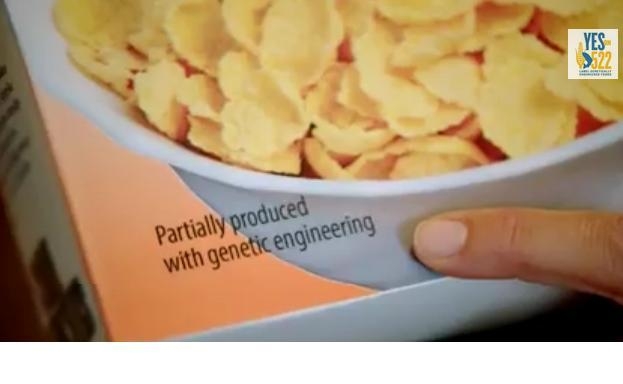Here’s the shame of GMO labeling Initiative 522: that all the money poured into the campaigns—nearly $22 million so far—hasn’t instead been spent on educating the public about the deeply complicated subject of genetic engineering itself.
The No side, which has raised a record-setting $17 million, could have explained that the vast majority of scientists consider genetically modified foods perfectly safe to eat, and view the technology as a tool to boost productivity and tackle food-supply problems around the world.
The initiative’s supporters could have made their case for why they are skeptical of scientific reassurance, and object to the predatory practices of some biotech firms involved in genetic engineering.
Instead we are left with a proxy war—one in which initiative supporters utter a vague rationale about the “right to know,” and opponents look like bullies with their overspilling war chest and battery of confusing technical arguments. But this is the fight we have, and the devil, as always, is in the details.
The first thing that is important to realize about I-522 is that it requires a different sort of label than those mandated by many of the 64 countries with GMO-labeling laws. Abroad, information about genetically modified ingredients is usually found on the side ingredient panel; it’s just one item of many, written in the same small type.
“I won’t say you need a magnifying glass, but it would help,” says Vivian Moses, a visiting professor of biotechnology at King’s College London, about the tiny lettering.
In contrast, I-522 requires that a label be put on the packaging front, with the words “genetically engineered” or “may be partially produced with genetic engineering” written “clearly and conspicuously.” Trudy Bialic, the public-affairs director of PCC Natural Markets and an author of I-522, explains the front-of-the-packaging requirement by saying that federal regulations prevent a state from adding a new mandate to the ingredient panel.
Whatever the reason, it’s easy to image that the difference could be consequential. In the mid-aughts, the European Union funded Moses to do a study on how GMO labels were affecting consumers’ buying patterns. His results were startling.
“We found there was no relationship between what consumers said they would do and what they actually did,” Moses says. Most interesting is that shoppers who’d claimed they wouldn’t buy genetically modified products actually had such goods on their shelves at home.
But would the same hold true for shoppers in Washington state confronting much more conspicuous labels? Really, it’s anybody’s guess, as is the related question of how food manufacturers would respond to a labeling mandate. “I don’t know what’s going to happen,” says Jayson Lusk, a food economist at Oklahoma State University. “Anybody who tells you they do is lying.”
Julie Caswell, a food economist based at the University of Massachusetts at Amherst, says adding a GMO label to packaging would be a “minor cost” to food companies, since they repackage their products all the time anyway.
Caswell predicts that a majority of companies will take this route because it would be difficult to find sufficient non-GMO ingredients. Unlike in Europe, where few genetically engineered products are sold, GMOs are pervasive in the U.S., particularly corn and soybeans, whose derivatives are used widely in packaged food.
Yet she speculates that at least some companies will probably avoid the GMO label, and here’s where things get tricky and potentially costly. Those companies would first have to seek alternative ingredients, and they tend to be more expensive, especially if organic (which have been certified as not using GMOs). There would also be production and distribution costs involved in ensuring that a product would be pure enough to not need a label. The initiative sets a rigorous standard: Until 2019, a product that contains .9 percent or more GMOs must carry a label. After that, a label is required for any amount of GMOs.
That standard, potentially violated by even a trace amount of GMO, raises the question of contamination as goods are transported or processed. Oklahoma State’s Lusk says a company that wanted to make sure it wasn’t legally liable for failure to label would have to use different rail cars, trucks, grain elevators, production lines, and the like for non-GMO goods. (Caswell suggests that an entirely separate production line might not be necessary, but its equipment would need to be thoroughly cleaned.)
A report released last week by the Washington State Academy of Sciences, which analyzed the potential impact of I-522, also concluded that “the bulk of private costs arise in segregation of products along the supply chain.”
But I-522 backer Bialic contests that scenario. She points to what she calls a “safe harbor” provision in the initiative that protects growers and food producers subject to inadvertent contamination. The provision exempts those who do not “knowingly or intentionally” incorporate GMOs. A sworn statement to that effect is required.
The point, Bialic says, is simply to make sure that nobody intentionally puts, say, GMO apples “in the same bin with” regular apples “and turns them all into applesauce.” (There are no GMO apples currently on the market, but one, the Arctic, is awaiting government approval.)
But the safe-harbor exemption is surely open to interpretation, especially a clause in it that says it applies to foods that have been “segregated” from GMOs. As Bialic recognizes, the arbiter of such wording would be the state Department of Health, whom the initiative vests with regulatory and enforcement powers.
“That will be a rigorous and spirited conversation, I’m sure,” Bialic says of the rule-making process the DOH will launch should the initiative pass. Think of the regulatory process now underway by the state Liquor Control Board, which is charged with implementing marijuana-legalization Initiative 502.
In that way, I-522 will likely spark more debate even if it passes and puts Washington on the path to become the first state to implement a GMO-labeling law. Oddly, all that may happen without a real public debate on the most important questions of all.
nshapiro@seattleweekly.com








